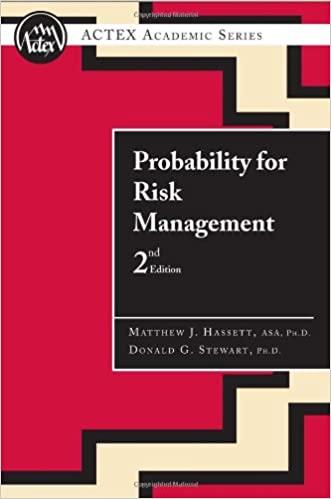Question
QUESTION 1 A firm with variable-rate debt that expects interest rates to rise may engage in a swap agreement to: A) pay fixed-rate interest and
QUESTION 1
- A firm with variable-rate debt that expects interest rates to rise may engage in a swap agreement to:
| A) pay fixed-rate interest and receive floating rate interest. | ||
| B) pay floating rate and receive fixed rate. | ||
| C) pay fixed rate and receive fixed rate. | ||
| D) pay floating rate and receive floating rate. |
QUESTION 2
- Which following statement is INCORRECT?
| When the market is not in equilibrium, the potential for risk-less or arbitrage profit exists. | ||
| a) The theories about how exchange rate always work out to be true when compared to what students and practitioners observe in the real world. | ||
| A forward exchange agreement between currencies states the rate of exchange at which a foreign currency will be bought forward or sold forward at a specific date in the future. | ||
| RPPP holds that PPP is not particularly helpful in determining what the spot rate is today, but that the relative change in prices between two countries over a period of time determines the change in the exchange rate over that period.
|
QUESTION 3
- Lluvia Manufacturing and Paraguas Products both seek funding at the lowest possible cost. Lluvia is the more credit-worthy company. It could borrow at LIBOR+1% or it could borrow fixed at 8%. Paraguas could borrow fixed at 12% or it could borrow floating at LIBOR+2%.
Lluvia would prefer the flexibility of floating rate borrowing, while Paraguas wants the security of fixed rate borrowing. What should they do?
| A) Lluvia could borrow fixed at 8% and swap for floating rate debt. | ||
| B) Paraguas could borrow floating at LIBOR+2% and swap for fixed rate debt. | ||
| C) Both are right actions. | ||
| D) None is right. |
QUESTION 4
- What opportunity set for improvement in rate for Lluvia and Paraguas?
| A) 3% savings for both which can be distributed between the two parties.
| ||
| B) 4% savings for both which can be distributed between the two parties. | ||
| C) 5% savings for both which can be distributed between the two parties. | ||
| D) None of the above. |
Step by Step Solution
There are 3 Steps involved in it
Step: 1

Get Instant Access to Expert-Tailored Solutions
See step-by-step solutions with expert insights and AI powered tools for academic success
Step: 2

Step: 3

Ace Your Homework with AI
Get the answers you need in no time with our AI-driven, step-by-step assistance
Get Started


